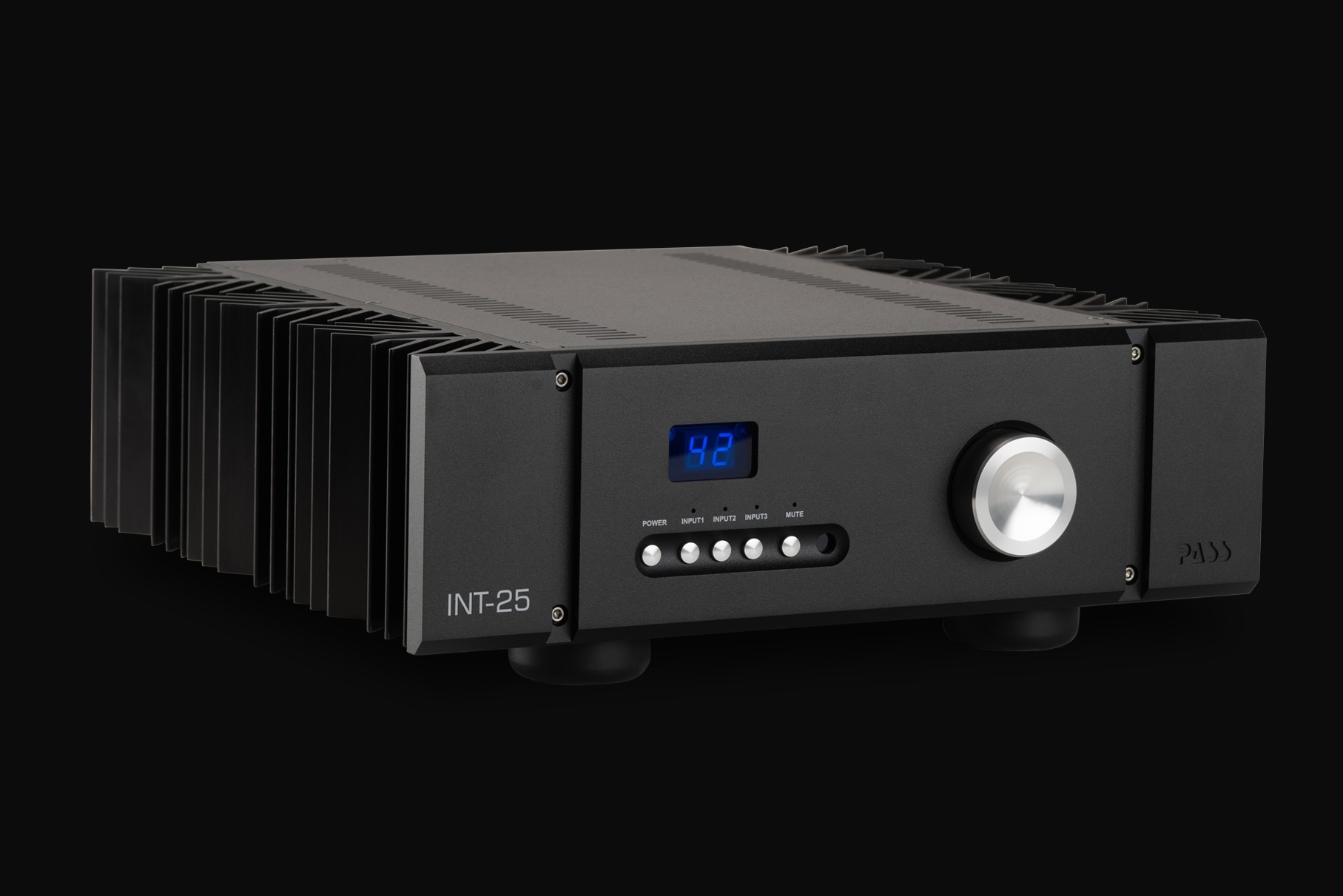Aurorasound HFSA-01
On Demo !
HFSA-01 is a hybrid pre-main amplifier utilizing the advantages of both vacuum tube and semiconductor. The tube EL84 delivers 14W + 14W power output. The model is equipped with bass and treble controls. The input stage has a built-in phono equalizer for MM-type cartridges, along with 3-channels of RCA unbalanced input terminals.
On Demo !
HFSA-01 is a hybrid pre-main amplifier utilizing the advantages of both vacuum tube and semiconductor. The tube EL84 delivers 14W + 14W power output. The model is equipped with bass and treble controls. The input stage has a built-in phono equalizer for MM-type cartridges, along with 3-channels of RCA unbalanced input terminals.
On Demo !
HFSA-01 is a hybrid pre-main amplifier utilizing the advantages of both vacuum tube and semiconductor. The tube EL84 delivers 14W + 14W power output. The model is equipped with bass and treble controls. The input stage has a built-in phono equalizer for MM-type cartridges, along with 3-channels of RCA unbalanced input terminals.
“This one is special. If amplifiers were akin to people, the Aurorasound HFSA-01 might be Garland or Sinatra, born and bred to perform. ”
This model supports speakers with an impedance range of 4Ω to 8Ω and includes a headphone output.
The front panel is adorned with Mahogany wood on both sides, enhancing its retro appearance and creating a relaxing atmosphere for a more enjoyable audio experience. Although the HFSA-01 is designed with an orthodox configuration, it meets the basic requirements for sound quality and overall performance across a wide range of sources, from high-resolution digital to analog records, catering to any generation and age group.
The output vacuum tube EL84, a pentode equivalent to the 6BQ5, operates in a push-pull configuration, delivering extremely low distortion and excellent frequency characteristics with ultra-linear connections. The driver for the EL84 is the well-known Texas Instruments OPA604A, a high-precision audio op-amp. Aurorasound has developed a perfect phase inverter circuit with the OPA604A to drive the push-pull operation in the most ideal way.
The tone-control section employs a CR-type circuit for easy adjustments, achieving richer bass and more comfortable treble to match listeners' sound preferences, even with small speakers. The phono equalizer uses Linear Technology's semiconductor to achieve an excellent signal-to-noise ratio with an NF-type circuit configuration.
The power supply section is completely isolated between the vacuum tube and semiconductor components, eliminating any interference regardless of volume level and frequency range. The rectifier uses a super low-noise silicon carbide diode from Rohm.
The output transformer and power supply transformer are custom-designed by Aurorasound and manufactured by a Japanese company. This model also employs carefully selected high-quality capacitors and resistors.
-
Input: Phono-MM, Gain40dB — Cartridge load resistance 47kΩ, RIAA +/-1dB — RCA unbalance, CD, LINE-1, LINE-2
TONE Control: BASS +/-12dB, TREBLE +/-12dB,
Output: Max 14W + 14W at 8Ω speaker
Frequency response: 10Hz ~ 40kHz, -3dB, Tone Flat
THD+N: 0.08%, 1kHz, 2W, A-weighted
SNR: 93dB, LINE IN-OUT
Functions: TONE control pass DIRECT SW, Stereo/Mono, Headphones output
AC voltage: USA model AC120V, Europe/Asia model AC220V, 240V
Power consumption: 150W
Size, Weight: W360 x D320 xH145mm max, 10.3kg
-
Derive the Maximum Potential of Headphones
The balanced-drive configuration, having an independent circuit block, one each for L & R, assures no leakages between L & R due to no common-ground design. It has superb impulse response characteristic with high S/N ratio. HEADA is equipped with four Aurorasound’s uniquely designed high-performance discrete amp modules in order to accommodate high-resolution music sources which have wide dynamic range and frequency range.
The volume control is of pro-use type, manufactured by Tokyo Ko-on Denpa, widely used in recording equipment. The large size conductive-plastic potentiometer characterizes dB curve, which allows not only a smooth feeling, but also a precise volume setting even at low-level. It also provides a perfect balance between L/R without gang-errors. The power supply uses a toroidal transformer and schottky barrier diodes with high-speed and low noise precision power supply circuit,which effortlessly supports the energy supply base for unprecedented performance of HEADA.
Versatile Design for Any Headphones
There are two input channels, CH-1 has XLR balanced input as well as RCA connector. The unit has a through-output terminal which delivers the input signal directly to the output. The balanced output can accept both 4-pin XLR and 3-pin XLR, also an unbalanced ¼”standard phone output is provided making HEADA an universal headphone amplifier.
Unlike speakers, headphones’ impedances and sensitivities vary widely, therefore, in order to satisfy any type of headphones to guarantee the best performance the maximum output delivers 2Wx2 power, and gain is selectable between LOW and HIGH. It can drive headphones with impedances from 16Ω to 600Ω.
For your convenience, Aurorasound introduces a manual describing how to modify your headphones to balance type. It is limited to L/R independent cable output. Please visit Aurorasound home page for more details.
Artists’ Life-like Presence
The wooden cabinet exudes an aura of mid-century-like dignity, coupled with machine-tooled rhodium-plated RCA jacks, an extruded aluminum knob, and brass anti-vibration insulator to achieve the ultimate performance without any compromises at all.
Excellent 3-dimentional sound image, and extremely high speed response permit reproduction of sound from absolute silence to fortissimo spontaneously. Yet, it returns to absolute quiescence which is attributable to a super-high dynamic range. Please enjoy the artists’ life-like sound. You can almost grab in your hands the images of musical instruments such as bass and drums, etc. In addition, you can capture the recording mixing engineers’ intended sound concept with use of HEADA.
-














































